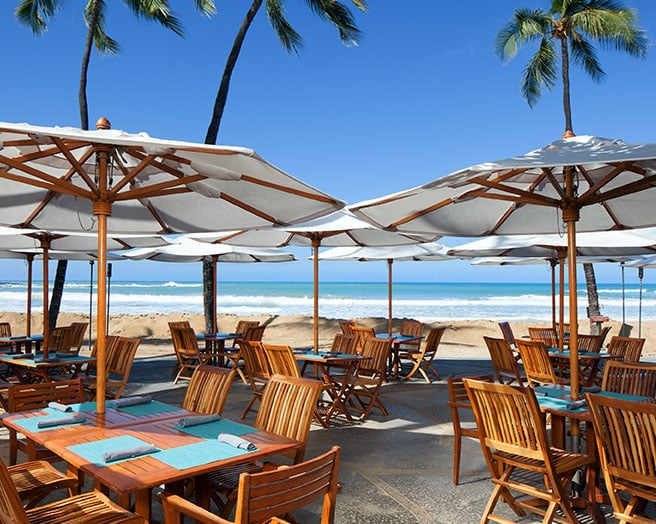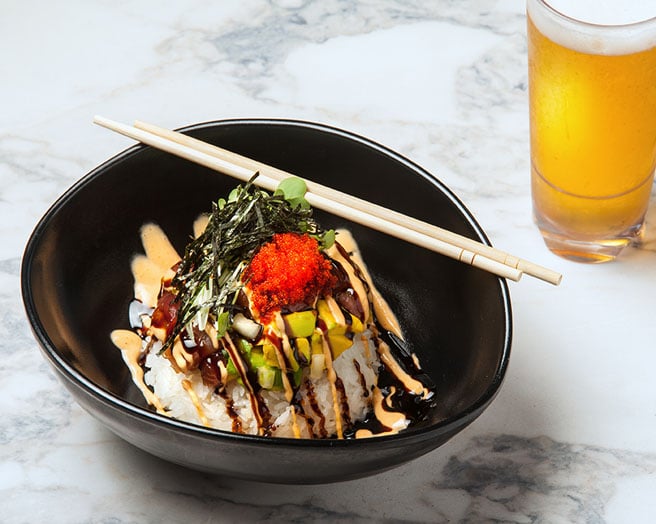The Long Mountain - Mauna Loa
The Long Mountain
Exploring Mauna Loa—the world's largest active volcano
By Andrew Walsh
Can you feel the rumbling beneath your feet? Buried three miles below the world’s most massive active volcano, earthquake swarms and increased seismic activity echo the most recent awakenings of Hawai‘i’s “Long Mountain”—Mauna Loa. Although the Big Island has two of the world’s most active volcanoes, neighboring Kīlauea is better known since it’s considered the most active volcano in the world, but perhaps that is all about to change as Pele, the fire goddess, is clearly at home on both mountains. After 38 years, she burst forth a fiery trail of lava from the floor of Moku‘āweoweo Caldera and spewed molten rock and earth downslope the Northeast Rift Zone towards Saddle Road in an awe-inspiring display of her eternal presence as the creator and taker of land in the Islands.
The Hawaiians believe that Pele thrust her digging stick into Mauna Loa’s summit and created these fiery lava chambers and fearsome forces we still feel. According to one legend, Pele was chased to Mauna Loa by her sister Namakaokahai, goddess of water and the sea, after seducing her husband. Although Namakaokahai would flood the pits of any new home Pele dug, high atop the lofty heights of Mauna Loa, Pele was beyond the reach of the sea goddess.
Pele’s heavenly home peaks about 30,000 ft. above the sea floor below and is considered the heaviest and widest volcano in the world. Above sea level, it rises to almost 14,000 ft., but below the waves its massive flanks, like a proverbial hidden iceberg, extend three miles below the see. So massive, it has actually depressed the ocean floor beneath its mass an additional five miles. The total lava pile that constitutes its enormous mass extends 56,000 ft. from base to summit. Pele chose her towering home wisely.
And with the most recent eruption on Mauna Loa, Pele reminds us that the Big Island is very much alive and growing larger by the day. In the last decade scientists had previously recorded “continued deformation related to inflation of a magma reservoir beneath the summit and upper Southwest Rift Zone.” That translates to look out it might erupt! Well, turns out it did, but not quite where they expected. Although previous activity was primarily in the southwestern part of Mauna Loa’s massive magma storage complex, the main fissure occurred in the Northeast Rift Zone. And the increase in the frequency and intensity of earthquake activity in recent years above normal background levels, meant a new eruption wasn’t if, but when and how much.
Turns out, it was a slow-moving eruption, flowing downslope at about 20 feet per hour. Typically, Mauna Loa erupts at a higher rate, with fast-moving, long-traveled flows. But, unlike about half of the total recorded eruptions, this one did not stay confined to the summit caldera and may have posed a threat to infrastructure below. While the spectacular displays of fiery lava, birthed deep inside Mauna Loa’s immense magma chambers attracted worldwide attention and countless onlookers to viewing points along the Saddle Road, eruptions from the volcano are actually quite common. Of the 33 recorded eruptions, one has occurred on average about every five years, except for the long overdue 38-year stretch in recent times.
Mauna Loa has actually been continuously erupting for hundreds of thousands of years and encompasses half of the mass of the Big Island alone. It is one of five shield volcanoes that constitute the Big Island. Around 75 million years ago, the Hawaiian-Emperor seamount chain broke free from the depths of the Pacific Ocean fueled by a “hotspot” of seeping magma from the asthenosphere under the Pacific Plate. As each island gradually increased in size, the enormous Pacific Plate slowly drifted past the hotspot and a new island or volcano took its place. The Big Island is the most recent visible island undergoing this ancient volcanic procession. The most recent, Lō‘ihi (young undersea volcano), is still underwater, but expected to peak from beneath the waves sometime in the next hundred thousand years.
The violent beginnings and continual renewal of Hawai‘i Island is a geologic narrative repeated many times throughout the Hawaiian chain. As each new island passed the hotspot and grew in size, the one it replaced began a timeless battle with the unrelenting erosive forces of Mother Nature. This geologic process is evident over thousands of miles of ocean from the gently sloping sides of Mauna Loa to the coral atolls at the very edge of the Northwestern Hawaiian Islands. Seen from space, the Hawaiian Islands trail out in a northwesterly arc across a huge expanse of Pacific Ocean like dollops of sand forced out from beneath the waves. Each one, slowly receding back, reclaimed by the sea and drifting northwestward. Just as tiny Kure Atoll, 1,500 miles away to the northwest, once stood tall where the Big Island is today, Mauna Loa looms high above the seas building pressure deep within the scalding depths and massive cauldron of its ancient magma chambers.
But despite being one of the most well recorded volcanic zones in the world, the movement of magma is still very much a mystery to scientists studying Mauna Loa. At least in terms of when it will erupt. While at present there is a decent chance of continued eruptions as it is normal for the flow to stop and start, the USGS Hawaiian Volcano Observatory scientists use a complex satellite-based GPS network and Interferometric Synthetic Aperture Radar (InSAR) to monitor the surface movement of the world’s largest active volcano to predict its unpredictable nature. Additionally, they sink ultra-sensitive strainmeters and seismometers 100 meters down boreholes in its flanks. The goal is to gain a better understanding of when the next dangerous eruption will occur. Having accurate real-time monitoring of the volcano can reduce the risk to communities downhill of the eruptions, a relatively new technology in volcanology. Given the recent 38-year lava hiatus, it would suggest this eruption is just the beginning. However, inflation has decreased under the Northeast Rift Zone as well as tremor (subsurface fluid movement detection), both of these generally indicate less future activity. Also, of the last eight eruptions close by, none of them returned to high levels of activity after similar decreases. But Pele is ancient and not easily stirred. Once she wakes, it’s a good bet she will not easily return to her slumber. And while it may be weeks or months between flows, the past reminds us to be vigilant and wary of her restless destructive nature.
In 1881, a flow from Mauna Loa entered what is now the city of Hilo, the Big Island’s largest populated area, located on the eastern shore. In 1984, another flow stopped just shy of Hilo. The amount of lava and new terra firma that Hawaiian volcanoes can produce from even small eruptions is significant. The modest 1983 eruption of Kīlauea covered 30,000 acres with lava, created 180 acres of new land offshore, and resulted in $62 million dollars of property damage. And the more recent eruptions from 2018 to the present have claimed almost 700 homes and sent dangerous plumes of ash and gas 30,000 feet into the air blanketing many parts of the Big Island. But amazingly that is nothing compared to the geologic forces these volcanoes can unleash. Movement of the southeastern flank system off Mauna Loa is responsible for the largest recorded earthquake in Hawai‘i, a magnitude 7.9 in 1868. It claimed the lives of 77 people and created widespread destruction across the island, including landslides, tsunamis, and building collapses. The aftershocks from this event continue to the present-day.
Although Mauna Loa historically tends to produce greater volumes of lava over shorter periods of time than its fiery neighbor Kīlauea, its eruptions are slower and “calmer” compared to many of its violent volcanic counterparts rimming the Pacific. This is typical of shield volcanoes, a characteristic that contributed significantly to a substantial upland area ripe for agriculture and human habitation on the Big Island. Shield volcanoes eject large quantities of basalt-rich lava. Basalt is very fluid resulting in sloping-sided coastlines, as opposed to the steep, silica-rich volcanoes elsewhere in the Pacific. The distinct geochemical makeup of the lava from Mauna Loa is largely responsible for the ensuing civilization on the islands. It would seem that even the rocks that make up the ‘āina (land) are imbued with a sense of aloha!


But even when it’s not erupting, Mauna Loa offers distinct features, ecosystems, and unique attractions waiting to be discovered by the inquisitive explorer. The stunning drive with views of the summit from the Saddle Road is an easy way to appreciate the grandeur of Mauna Loa while also experiencing expansive views of Mauna Kea and the surrounding island. A stop at the kīpuka (land surrounded by lava flow), Pu‘u Huluhulu, a 38-acre wildlife preserve and ancient Koa forest along the route, is a great way to acclimatize to the lofty altitude. You can now also find safe viewing spots to see the amazing display of lava at night and during the day if it is erupting. While access to the summit will now be limited, you can still make out in the distance the Mauna Loa Observatory (MLO). Among a multitude of interesting scientific projects, it’s home to the world’s oldest continuous CO2 monitoring station. Since 1956, it has been the primary benchmark for atmospheric CO2 and instrumental in our understanding of climate science.
While there are numerous hiking trails from the summit and other areas to access Mauna Loa, many of them will be closed due to the dangerous conditions from the recent eruptions. For now, it is best seen from afar or even better from the aerial view of a helicopter tour. On the Saddle Road a traffic hazard mitigation route (THMR) was created to allow visitors a safe place to view the show when Pele gets going. It starts at the entrance to the old Saddle Road across from the Gilbert Kahele Recreation Area (which will remain open 24-hours a day until further notice) and continues 4.5 miles from the entrance to just before Pu‘u Huluhulu. Onlookers are only allowed to park for 90 minutes at a time. Don’t stray too far from your vehicle as the Saddle and Mauna Loa are no place to get lost, especially with active unpredictable lava flows. Always remember that high altitude sickness, disorientation, dehydration, sunstroke, injury due to falling, and sudden changes in weather are all ways to tempt fate at these remote altitudes. The USGS volcano alert for Mauna Loa was lowered to Advisory and will change if there is renewed activity. Be safe and the well-earned reward is an immersion into a world before time, across ancient landscapes and hidden moonscapes cloaked in fire.
Although Pele was victorious over her sister goddess Namakaokahai, it required the death of her physical body. She became a shape-shifting spirit that was known to inhabit the form of a beautiful young woman, a white dog, or an old woman asking for a cigarette. There is a legend of a white dog that appeared in 1959 before the massive eruption at Kīlauea. The dog was seen on many occasions by eyewitnesses over the next seven years until the eruptions ended in 1966. Attempts were made by the MLO staff to catch the white “spirit” dog, but it disappeared once Pele’s rumblings ceased. Many believe it was Pele warning people of the impending danger. So, enjoy the majesty of the mountain and keep a sharp eye and keen ear for the otherworldly display it has to offer you. And of course, any white dogs. But above all, approach “Long Mountain” with the utmost respect and reverence in all things you do, in the hopes it will meet you in similar spirits.








